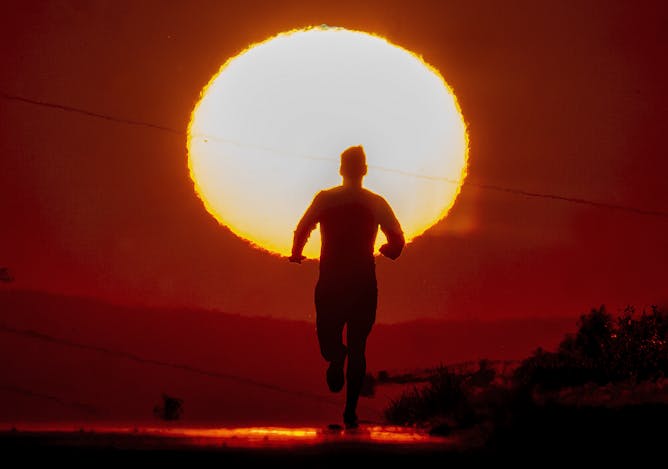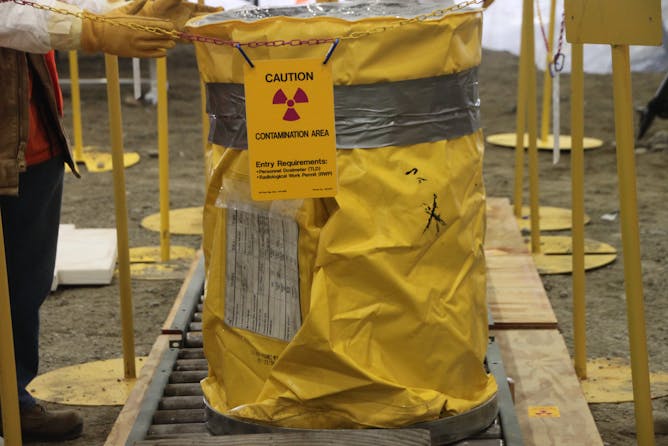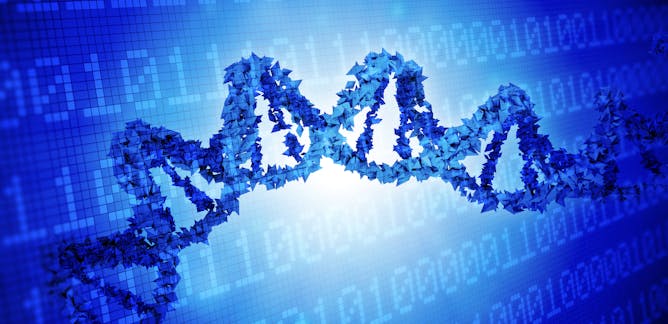|
|
|
|
It’s not news to readers of this newsletter that climate change raises the chances of extreme weather events. But Michael Wysession, professor of earth and planetary sciences at Washington University in St. Louis, writes there are additional factors driving this year’s record-breaking heat and downpours, including an expected El Niño this year, solar fluctuations and even a massive underwater volcanic eruption last year. The combination of factors means
the next couple of years could be “very rough,” Wysession warns.
One aspect of the race to build the atomic bomb that hasn’t gotten a lot of media attention in the wake of the “Oppenheimer” film is the legacy of nuclear waste. Researcher William J. Kinsella examines the Hanford nuclear site in Washington state and the troubling public health and environmental harms from its involvement in the development of plutonium fuel used in the bomb dropped on Nagasaki in 1945. In addition to polluting communities and ecosystems,
activities at the site fostered a culture of secrecy that has hampered efforts to address the problems there, he writes.
Back on the theme of heat, University of Arizona professor of architecture and building science Jonathan Bean explains why older homes can be harder to cool and why air temperature is an imperfect way of measuring comfort for people inside buildings. He explains not only the science but practical steps people can take to make homes cooler.
Also in this week’s science news:
If there’s a subject you’d like our team of science editors to investigate, please reply to this email.
|

|
Martin LaMonica
Director of Editorial Projects and Newsletters
|
|

2023’s weather has been extreme in many ways.
AP Photo/Michael Probst
Michael Wysession, Arts & Sciences at Washington University in St. Louis
The bad news: This extreme heat is probably going to stick around for a couple more years.
|

Packaging excavated radioactive materials at the Hanford site in Washington state.
USDOE
William J. Kinsella, North Carolina State University
Nuclear weapons production and testing contaminated many sites across the US and exposed people unknowingly to radiation and toxic materials. Some have gone uncompensated for decades.
|

The temperature you feel on a hot, sunny day doesn’t always match the thermostat.
Catherine Falls Commercial/Moment via Getty Images
Jonathan Bean, University of Arizona
Thermostats don’t tell the whole truth about heat, particularly in older homes.
|
|
|

Catherine A. Sanderson, Amherst College
People often privately feel uncomfortable about bad behavior they see around them but mistakenly believe their peers don’t share their concerns.
| |

Subhash Kak, Oklahoma State University
Many of the amino acids that make up proteins are encoded by genetic material in more than one way. An information theorist explains how principles of nature may account for this variance.
|

Travis Campbell, Southern Oregon University; Nathaniel Tran, Vanderbilt University; Samuel Mann, Vanderbilt University
Because of ethical considerations, there are no clinical trials comparing the effects of hormone therapy to conversion therapy on trans youths. But a set of recent studies tease out cause and effect.
| |

Emmy Betz, University of Colorado Anschutz Medical Campus
The 988 Suicide & Crisis Lifeline is for anyone experiencing suicidal thoughts, emotional distress, substance abuse issues or mental health problems.
|
|
|
|
|
-
Peter Schumer, Middlebury
How did the letter x get its enduring role as a symbol of the unknown? A mathematician explains why it’s hard to say for sure.
-
Kevin J. Krizek, University of Colorado Boulder
Cars are getting bigger on US roads, and that’s increasing pedestrian and cyclist deaths. A transport scholar identifies community-level strategies for making streets safer.
-
Chris McCahill, University of Wisconsin-Madison
US cities are starting to reform laws that required developers to provide minimum amounts of parking. But there’s more they can do to loosen the auto’s grip on downtowns.
-
Ivan Martinez, West Virginia University
The immortal cancer cells of Henrietta Lacks revolutionized the fields of science, medicine and bioethics. And they still survive today, more than 70 years after her death.
-
Emmanuel Urquieta, Baylor College of Medicine
If an astronaut were to die on Mars, neither cremation nor burial would be good options.
|
|
|
| | |
| | |
| |
| |
| |
|
|
|